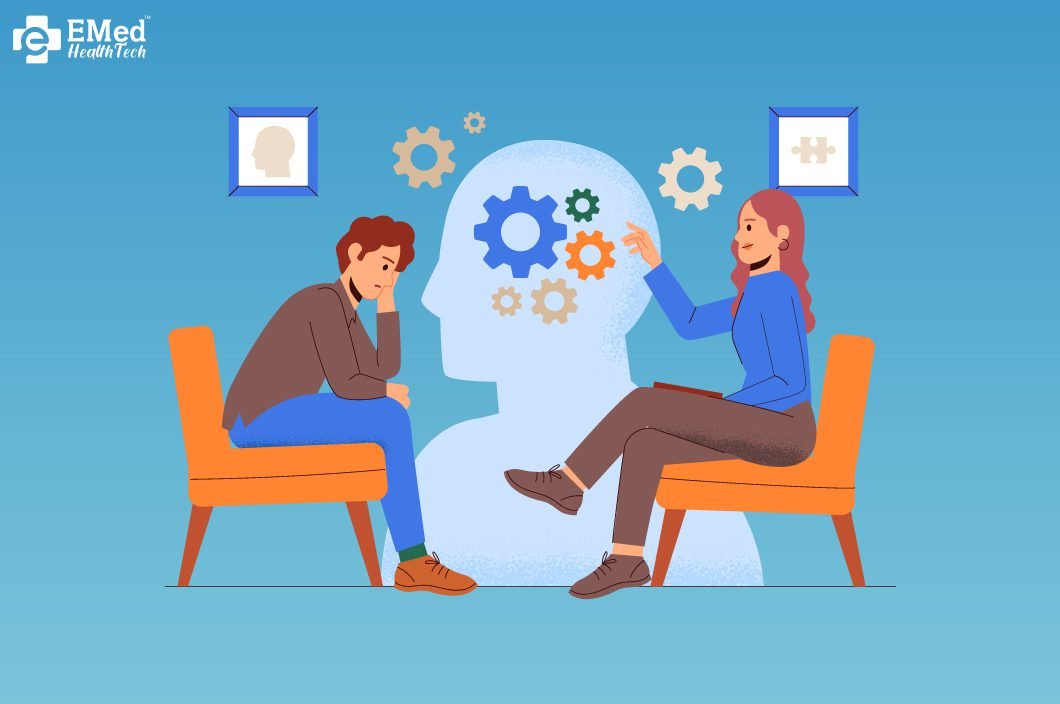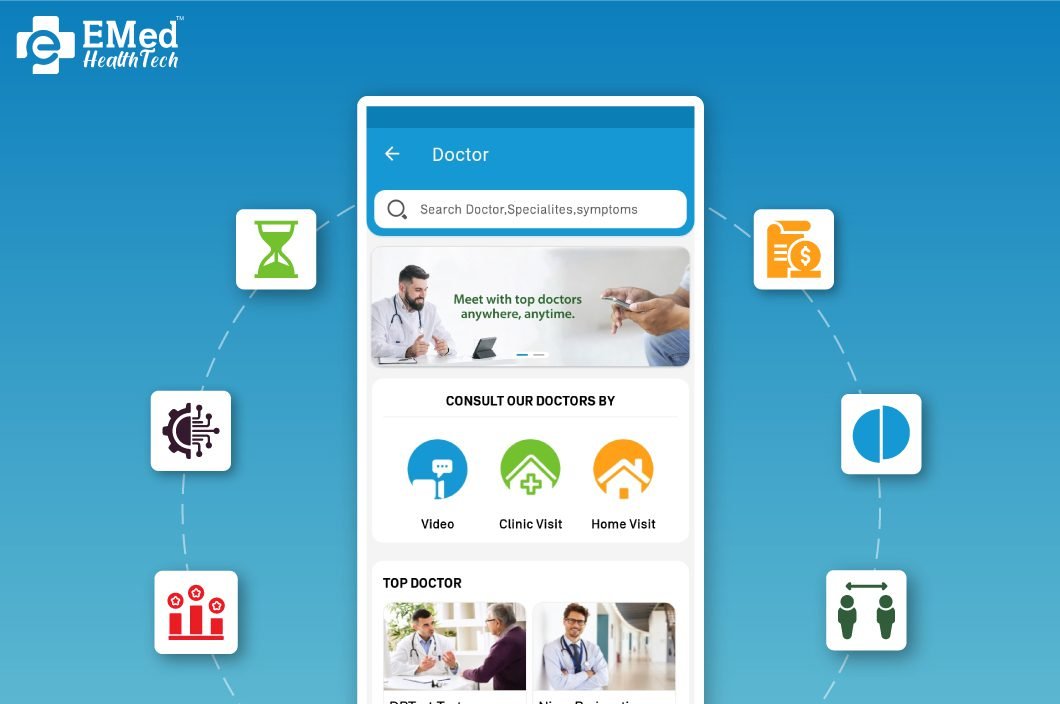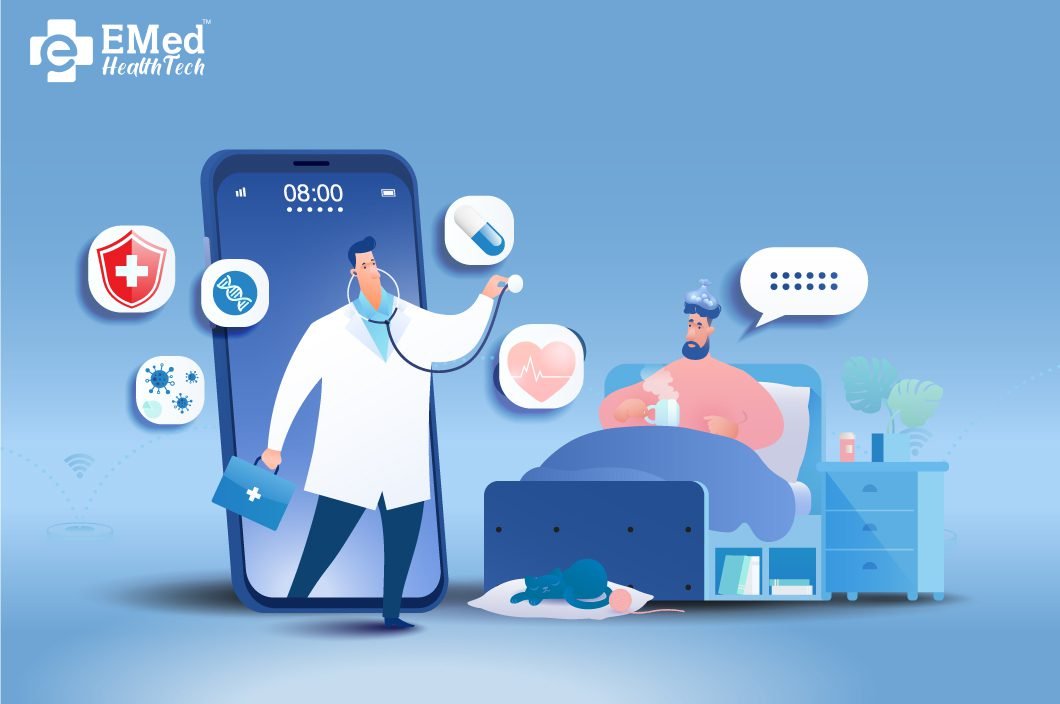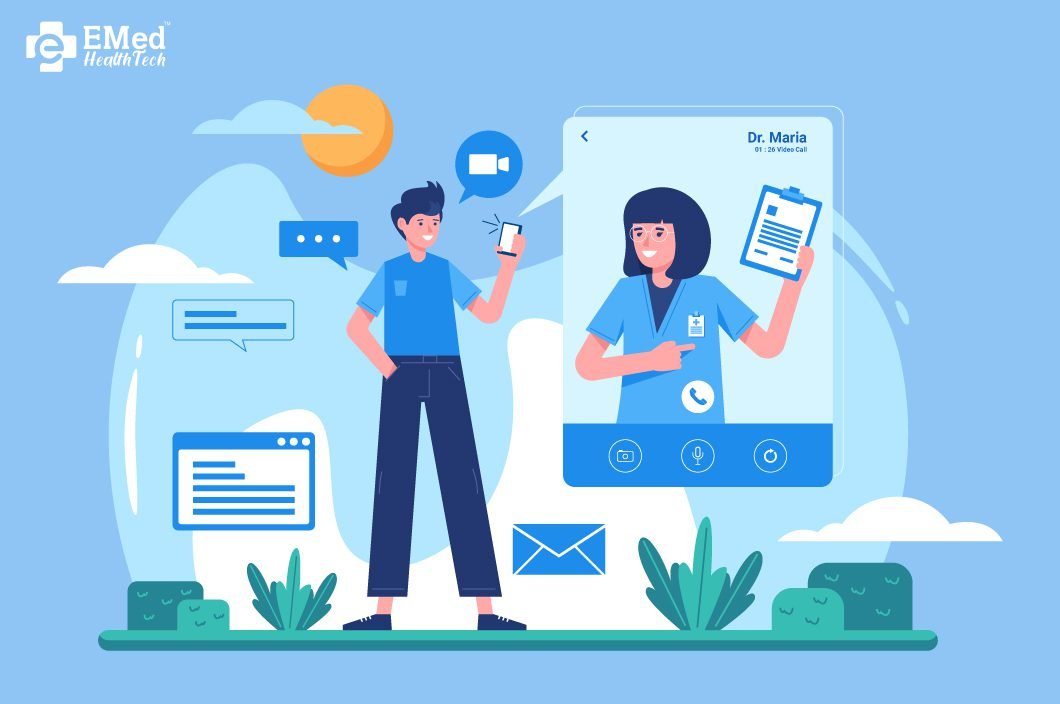The mental health scenario in India is a bleak one, with one in every seven people suffering from a clinically diagnosable mental disorder, according to a study by Lancet Psychiatry. There is also a huge disparity in the doctor-patient ratio. The required ratio, according to WHO, stands at 3 psychiatrists per 100,000 population, but India has only 0.75 psychiatrists per 100,000. This ratio is made taking into consideration that India is a low-income country.
However, with the entry of telemedicine into the mainstream, things are starting to look different. A virtual care system nullifies a lot of the geographical and physical barriers that keep a person from mental health services. With more access and awareness, the social stigma surrounding mental health issues also disperse. However, implementing a telemental health service has its challenges. We discuss some of the major challenges faced by Telemental Health and Telemedicine app development and how to overcome them.
Telemental Health Landscape in India
The telemental health landscape got a boost this year with the central government launching its National Tele-Mental Health Program (NTMPH).
The launch comes as a welcome change in the wake of the COVID pandemic. Having to withdraw from social circles, being forced into isolation, loss of loved ones, and threatened job security are post-COVID factors that have left a debilitating impact on mental health.
However, mental health issues are not just personal struggles. Studies show a deep connection between mental health crises and the economy of a nation. A simple explanation could be that poor mental health causes a loss of productivity, negatively affecting businesses and by extension, the whole economy. Not surprisingly, poor mental health is believed to have cost the world economy a whopping $2·5 trillion on average in 2010 — a number that’s about to rise to an unbelievable $6 trillion by 2030. India, alone, is estimated to face an economic loss of US$ 1.03 trillion due to mental health problems, according to the World Health Organization (WHO).
While the new action plans and studies shed a ray of hope on the telemental health care scenario, it is not without its own set of challenges.
Challenges of Telemental Health
Privacy
One of the major challenges in making use of the telemental health care system would be privacy. While privacy is a must in every medical consultation, in the case of mental health issues, there is the weight of social stigma attached to it. If a person decides to reach out to a mental health professional for help, this is often done discreetly. The lack of a private space is also a concern given that most Indian households have joint family systems. A space that is private and safe is a must to ensure that patients can fully avail of telemental health services.
Preference for in-person care
Despite the availability of virtual care, some people prefer in-person care. This is because mental health issues are more sensitive. Being able to confide in the presence of another person provides the warmth of human contact while a virtual consultation might seem cold and distant. It is also important to consider that most people would be forced to stay in an environment that might be conducive to their mental health deterioration. In-person, care ensures that the patient is part of a support group and in an environment that acknowledges their issues.
This preference gets in the way of patients accessing mental health services as well as telemental health providers.
Digital Literacy and Networking Issues
Using telemental health applications means that the patient requires a certain amount of know-how about technology. India particularly faces a large demographic of digitally challenged people, which amounts to 80% of 1.4 billion people. Digital literacy gets in the way of the proper implementation of telemental health programs.
Another glaring issue is connectivity. While there is an equivalent of 81.3% of the total population, the internet penetration rate in India is still at 47% as of 2021. This means that more than half of the population does not have access to the Internet. Because most telemental health services take place over the internet, a large portion of the people is not able to access this due to low connectivity.
Strategies to Overcome the Challenges
The challenges faced by the telemedicine industry in implementing its services are often broad. Here are a few strategies we can adopt to battle the challenges.
Awareness and Education on mental health
A developing country like India has its own set of social stigmas when it comes to dealing with mental health issues. Myths and superstitions get in the way of proper diagnosis and treatment. Creating awareness through campaigns to all people of all ages, introducing mental health issue awareness in school curriculums, and breaking the myths surrounding mental health treatment can help tackle this challenge to a large extent.
Better connectivity
India is a developing country and is only slowly pacing towards a fully networked society. Creating better connections is a slow process, but one that can create significant changes. With better connectivity, mental health services can reach remote areas and persons with restrictions on mobility.
Digital literacy
India’s statistics on digital literacy, as mentioned above, are bleak. While there are a lot of mobile phone users as per the statistics, not many may be literate on anything beyond the basic functionalities. Inculcating proper digital literacy into the school curriculum, and through social channels to reach the older crowd can help better the digital literacy rate. Updating to smartphones is also important to avail advanced services of telemental health.
Telemedicine App Development for Telemental Health
Telemedicine applications are software built especially for dispersing virtual medical care. It is a multifaceted application that is intended for multiple types of users. It has particular interfaces for patients, doctors, healthcare staff, pharmaceuticals, and administrative staff. Each interface has its functionalities, all of which when working in tandem provide a seamless user experience.
The telemedicine app or doctor appointment booking app has features like AI-powered automation which enables chatbots and other day-to-day activities. Data analytics and business intelligence provide valuable insights that can help make informed decisions. ERP capabilities in the telemedicine app help with management and business activities. When built to the specific need of a healthcare facility, a telemedicine app can become a powerful platform for virtual medical care.
Final Words
Building a telemedicine app is a significant business step. The ideal telemedicine app development company will provide the necessary features for your specific need, 24*7 SLA customer support, and will have experience and proven mettle with a seasoned team of experts.
EMed HealthTech is a leading name in providing scalable, cost-effective, and customized telemedicine app development services for healthcare facilities of all sizes. Our healthcare apps have a proven track record of optimizing operations. Talk to us today about your telemedicine app development needs.















